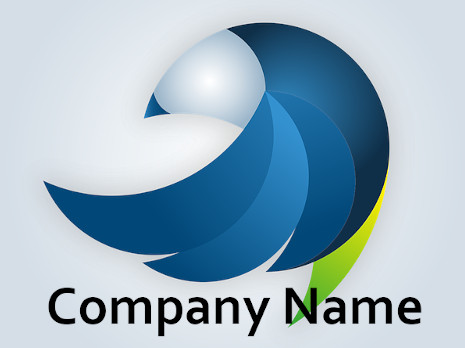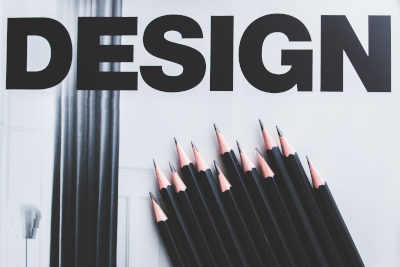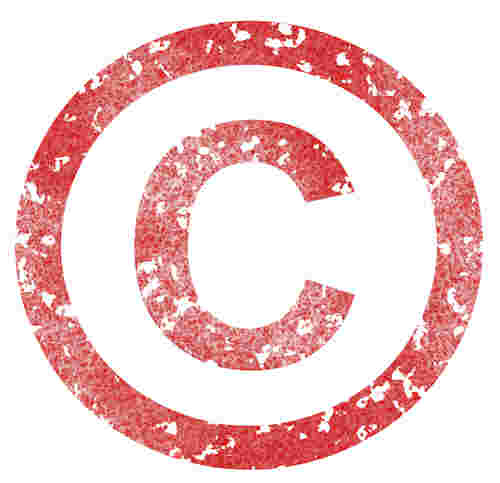Creating and protecting your business logo
The importance of your logo
Your company logo is the key part of your business identity. It is vital that it reflects your brand well.
Your customers will associate the logo with the product or service that you supply. They will remember the good service they received, and will see the logo as a brand they trust when they are ready to buy again or recommending to a friend.

Creating a good logo.
Before you even start on a logo design you should take some time to really consider your business and understand what you want to convey. Try brainstorming ideas with friends or colleagues. Ask yourself questions about your business, for example:
- Who is your target market? e.g. men, women, students, retired, pet owners, gamers, gardeners, corporate, other businesses, etc., and what appeals to them.
- What is unique about your business? What makes you different from your competitors? Do you deliver faster, specialise in a specific niche, etc.
- What are your business values? e.g. quality & bespoke, environmentally friendly, etc.
- What tone is appropriate? e.g. formal & professional, cute & quirky, etc.
Your logo should be distinctive and not just a generic word or phrase describing what you do. It should contain artistic and design elements that make it stand out from the crowd. Including imagery that reflects what your business does, or visually represents the name, can be used to add intrigue or humour; this helps people to remember your business.
Finally, it should not be overly complex. Your logo should look good at a small size or large and ideally also work in monochrome and other colour combinations.
If looking for inspiration, there are some clever logos at www.awwwards.com to get your creative juices flowing.
There is no right answer... some logos break all the rules and are still great.
Is it unique?
It is worth doing a google search for your brand name, including misspellings, plurals and similar sounding words.
You can search trademark registers:
- UK Intellectual Property Office
- European Union Intellectual Property Office
- World Intellectual Property Office
Avoid names that are similar to existing companies in your business sector.
Professionally designed logos
A good graphics designer will charge many £100’s (or even £1000’s) for a logo brief, but will take the time to understand your business and tailor ideas to suit the market sector and appeal to your potential customers.
This can seem expensive, but remember this is an investment in your future, and the cost will reflect many hours of the designer’s creative effort (good logos are not easy).
If you search online, you will be bombarded with budget offerings, and even automated logo design tools. These may be fine for you, but, as with most things in life, you get what you pay for. You should therefore exercise some caution with these, as the nature of these tools (and your budget) means that your logo may be assembled from various pre-existing elements such as generic images, clip art, fonts, icons, etc. Unless there are measures in place to prevent re-use, there is a possibility that someone else using such a service will already have a similar logo including some of the same elements used in your logo. This can potentially lead to complaints and even infringement claims even though both parties acted in good faith.
If you use a designer or an online logo generator to create your logo, then (unless there is an agreement in place to the contrary) they will normally be the copyright owner from the point of creation; this is known as the ‘first owner of copyright’. This protects the designer in case you use the logo, but refuse to pay for their work.
Of course, you want to make sure that you (or your company) will own the rights of your own logo when your dealings with the designer are complete. Typically, what happens is that the designer will hand over the rights to you upon payment. This should be clear in their terms and conditions, but if not, you should clarify this with the designer.
Do it yourself
If you are on a budget and plan to create your own logo from scratch, you may find Inkscape https://inkscape.org/ useful. It is a completely free open-source vector graphics software program, and a good tool to use for logo creation.

SVG file format
Most professional logo designers (and the Inkscape software we referred to), will output your logo as an SVG file (rather than a standard image file format such and PNG, JPEG, etc.).
SVG stands for scalable vector graphics.
SVG files do not store image data directly, but instead store the instructions to create the image.
This means that SVG files are scalable to any size without affecting the quality. This makes them ideal for logos.
You can of course use software to convert/export to PNG (etc.) files at a size suitable for your need when required.
Protecting your logo
You need to be prepared to protect and defend your logo and brand against infringements.
Risks include: Someone else trading off your brand name / logo in order to poach your customers. This can take the form of outright copying and impersonation (pretending they are you), implying some form of association or endorsement by your company, or simply using a very similar branding to confuse returning customers.
All of these actions dilute your brand and divert your customers into the hands of others who, based on the fact that they are willing to infringe your logo, are probably also less conscientious about their customer service. This reflects badly on you.
Your rights
Your logo will be subject to both copyright and trademark rights.
The key difference between copyright and a trademark is, whilst copyright exists from the point of creation, a trademark reflects the public perception (you have been trading under that mark and people associate it with you).
Trademarks.
A trademark is quite literally ‘a mark under which you trade’.
It can cover the logo, business name, and other branding, that are used to identify your business in the marketplace.
A trademark is intended to prevent confusion in the marketplace.
Trademark symbols
Trademark are represented by the 'R in a circle' ® denoting a registered trademark, or the letters 'TM'.
In the USA they have a separate classification for services and also use the letters 'SM' to denote a 'service mark'.
Unregistered trademark
Common law provides protection against what is called ‘passing off’. This is where someone else uses the mark in the same or similar market in a way that could confuse customers that were looking for your business (such as an unscrupulous trader attempting to poach trade). To successfully prove passing off you should be able to demonstrate that:
- The mark is yours.
This requires some proof of ownership and/or creation (such as a copyright registration) that predates the offence. - Customers associate the brand with you.
You need to show you have been trading under that brand and have historical customers that have bought from you under that brand. - You have been harmed by the other person’s use of the mark.
e.g. loss of revenue.
Trademark registration
Trademarks are registered by country/territory and also by class (business category), so you will need to state in which class(es) of goods or services you will be using the trademark. If you are comfortable to do so, you can submit the application yourself.
In the UK trademarks are registered via the IPO - (see https://www.gov.uk/how-to-register-a-trade-mark), whilst the WIPO operate the Madrid System that allows registration in multiple countries from a single form (see https://www.wipo.int/madrid/en/).
If you require guidance and advice, or if the application is likely to be complex, then you should get professional advice. In the UK, the Chartered Institute of Trade Mark Attorneys maintain a list of registered professionals.
You can search for a local specialist via their website at https://www.citma.org.uk/
Applications can take anywhere from a few months (UK process typically takes 4 months) to up to a year to be completed.
It is generally easier to defend a registered trademark.
Copyright
If your logo has artistic elements (it normally will do), then it will qualify for copyright protection.
Copyright is an automatic international right, and protects artistic works from unauthorised copying and/or adaptation.
If a competitor uses your copyright logo (or an adapted version of it) to advertise their own products or services, this is a copyright infringement, and something you can take action to stop.
In order to prove a claim of copyright infringement you will need to demonstrate:
- That there has been copying, i.e. it is not just a coincidental similarity (this is why uniqueness is important), and
- That you own the original logo and your logo predates their copy; this is where copyright registration will help.

What is copyright registration?
Copyright registration involves submitting a copy of a literary or artistic work (such as your logo) to be held as evidence. This acts as an independently verifiable record of the work in your name from that date.
It helps to prove your prior claim, and thus avoid or reduce legal costs defending your rights in the event of a copyright infringement claim (e.g. a competitor using/copying your logo without permission).
Unlike trademark applications, which take months to complete, a copyright registration is far simpler and quicker. You are covered from the point you make payment, and you will normally get your registration number within 1 working day.
What copyright registration provides
- It can help to speed up or avoid legal proceedings in cases where someone unlawfully copies your logo.
- It can, at the very least, demonstrate the existence of the logo in your name from the registration date, which in turn can help prove your claim in a passing off case.
- While trademark registrations that take months, copyright registration can cover you immediately. So even if you are applying for a trademark anyway, this gives you some initial protection in the meantime, and can help establish your prior claim to the mark if a later trademark application is disputed.
- As copyright is an international right this can provide some assistance for claims in countries where you do not have a trademark registered. Please see our page "How copyright registration helps" for more details.
Protecting for your future and balancing the budget
Many companies starting out do not even consider protecting their logos and branding until they are established, or when it is already too late.
The cost of registering trademarks in every country can be prohibitively expensive and time consuming for a small company. In practice, businesses will tend to only register trademarks in countries where they have a strong trading relationship and fall back on copyright protection in the remaining countries.
Our general recommendation to a business looking to protect a logo would be to get a copyright registration in the first instance, as it gives you some immediate intenational protection and only costs £59.50 for a 5 year registration submitted via our website; which is less than the cost of registering a trademark in a single country. Then once you have that in place, consider applying for trademarks in the main countries that you do business in.
When you are ready to submit your logo (or other copyright work your company generates), copyright registration forms can be found at copyrightwitness.com/reg
